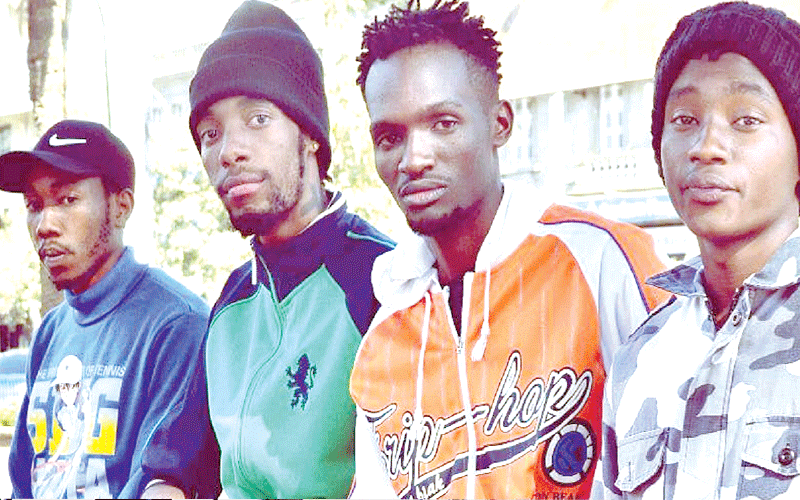Problems bedevilling gengetone music
By Adalla Allan, March 7, 2022Since gengetone made it’s debut on the Kenyan airwaves in 2017 following the release of Ethic’s trailblazing song Lamba Lolo, the music genre has generated a lot of mixed feelings, especially after it seemingly faded from the local playlists. It has since been eclipsed by foreign genres such as amapiano of South Africa and Afrobeats of Nigeria. When it started, gengetone was a big business for the artistes, producers, videographers and video vixens.
To try to resuscitate the genre’s lost glory, various players in the music industry—including promoters, producers, artistes, managers and producers— have provided their views on where the rain started beating gengetone and how it could be rescued from going to oblivion.
Divergent reception
Rama Ramzzy, a music director based in Malindi, compares gengetone with hip-hop, as when it emerged, it earned the same reception as hip-hop music that originated in the USA.
“There is something about gengetone that reminds me of Niggas Wit Attitude (NWA), an American hip-hop group whose members were among the earliest and most significant popularisers and controversial figures of the gangsta rap sub-genre. Among them Ice Cube, Dr Dre and Snoop Dogg, they got both positive and adverse reception from people. Further, 2Pac’s rap music was banned by the US vice president in 1992 since it attracted controversy. The same applies to gengetone,” he says.
Ramzzy adds that it’s possible to work with gengetone artistes, and that corporate companies should be endorsing them. “There is also a gap in artiste management. We need to be gengetone ambassadors since it is no different to any other dancehall music or hip-hop. People react to fame and money differently. I enjoy it when they are well paid because money exposes them to other things including the way they dress and behave. Gengetone is a music to chill with in a club or party just like any other music,” he says.
For Wahu Kagwi, who has been in the music scene for more than 20 years, she has always wanted to work with gengetone artistes.
“Everybody has something to learn from another as older ones have to educate the young and vice versa. The advantage of being older in the game is bringing to the table our experiences. I work mostly with younger artistes because they know what’s going on in the culture. And that is the collaboration we want to see. It is not all about competition,” she says.
However, Wahu advises that the bridge to corporate is what it’s needed to be worked on. “In terms of how we support each other, I have a lot to learn. This one never goes with experience as things do change and we should accept and learn how to cope with them. I should be sane about building my brand and social media,” she says.
Brand advertiser Njoki Kiiru says the raw culture and authenticity of the artiste is what makes brands pick a music track.
“Safaricom looked for Chris Kaiga since he was authentic in his Uko On song. Your identity defines your culture and a brand is not different from that. Once people have adopted the culture, they listen most to it. There is a fine line on advertising on alcohol brands and other brands, such that you don’t have to be under-18 and you can’t be in a video where people are drinking alcohol and misbehaving.
“Everyone including me was in utter shock when we first heard the Lamba Lolo song by Ethic, as it drew more attention for its powerful shameless language, but people embraced it with time. The authenticity and the completely raw culture is what made Ethic win the hearts of the audience,” she says.
Among most streamed
Mdundo.com head of licensing Kiplagat Kiprop, says that gengetone mix streams come in fourth on Mdundo streams in Africa, which shows that the genre can do even better if supported well. “Amazingly, gengetone is mostly consumed in Columbia. This is a clear indication that we can make it global from the resources that we can put together. It is more of an international tone just like the Afrobeat,” he intimates.
Misunderstood concept
Kashkeed, a beatmaker, music video director and manager of gengetone group Mbuzi Gang, says the problem is that fans don’t understand what gengetone is, as they have categorised it where it doesn’t belong.
“ We need to create an environment where we understand what gengetone really is. As creatives, we need to share information with these young generations of artistes to follow certain prescribed directions. We need to be open as creatives to tell how the industry works. West Africans have not been able to sample gengetone, meaning the gengetone is on another higher level,” he confides.
He adds that the genre can be the third most streamed in Africa after amapiano and Afrobeat, pointing out the Shamra Shamra jam by Mbuzi Gang has got 20 per cent play time from Kenya, while 80 per cent is from across the world.
Boomplay Kenya artiste relations manager Arthur “Jinx” Oloo supports the notion that gengetone is a big genre as evidenced by the Figa music hit done by Jamaican dancehall singer Konshens in collaboration with Ethic.
“It was a big step forward. Streaming has been consistent for the last few years, and more excitement could be found when our artistes do more collaborations with other like-minded artistes from elsewhere,” he says in conclusion.
